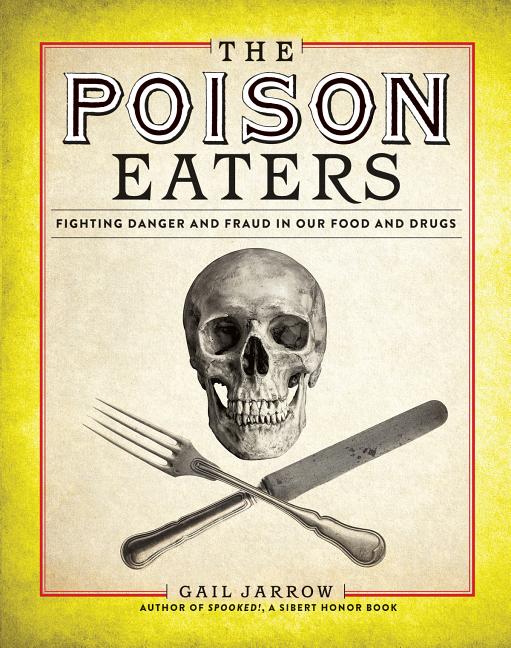Book Descriptions
for The Poison Eaters by Gail Jarrow
From Cooperative Children's Book Center (CCBC)
Before Harvey Washington Wiley, there was no regular testing of food products. There was no rigorous examination of product claims for what were often “quack” medications, or questions about the safety of food additives. Jarrow’s look at the life and career of Wiley exposes the hidden dangers of some of the products that people ate regularly in the past, not knowing that they were, in some cases, ingesting poison. Wiley’s work included an ongoing study of volunteers known as the “poison eaters” for their willingness to ingest questionable ingredients, but it went far beyond this, and his passion for and commitment to consumer safety helped lead to the formation of the FDA. Wiley’s story also gives contemporary readers an introduction to the sorts of corporate lobbying and profiteering we still see today at the expense of the health and safety of ordinary people. Jarrow’s descriptions of tragic, horrifying, misleading or simply gross ingredients that were once commonplace are both fascinating and alarming. A book incorporating generous visual material, including photographs, documents, advertisements, and political cartoons, concludes with a glossary, timeline, detailed source notes, and recommended websites and books. (Age 11 and older)
CCBC Choices 2020. © Cooperative Children's Book Center, Univ. of Wisconsin - Madison, 2020. Used with permission.
From the Publisher
Washington Post Best Children's Book
Formaldehyde, borax, salicylic acid. Today, these chemicals are used in embalming fluids, cleaning supplies, and acne medications. But in 1900, they were routinely added to food that Americans ate from cans and jars.
In 1900, products often weren't safe because unregulated, unethical companies added these and other chemicals to trick consumers into buying spoiled food or harmful medicines. Chemist Harvey Washington Wiley recognized these dangers and began a relentless thirty-year campaign to ensure that consumers could purchase safe food and drugs, eventually leading to the creation of the U.S. Food and Drug Administration, or FDA, a US governmental organization that now has a key role in addressing the COVID-19/Coronavirus pandemic gripping the world today. Acclaimed nonfiction and Sibert Honor winning author Gail Jarrow uncovers this intriguing history in her trademark style that makes the past enthrallingly relevant for today's young readers.
Formaldehyde, borax, salicylic acid. Today, these chemicals are used in embalming fluids, cleaning supplies, and acne medications. But in 1900, they were routinely added to food that Americans ate from cans and jars.
In 1900, products often weren't safe because unregulated, unethical companies added these and other chemicals to trick consumers into buying spoiled food or harmful medicines. Chemist Harvey Washington Wiley recognized these dangers and began a relentless thirty-year campaign to ensure that consumers could purchase safe food and drugs, eventually leading to the creation of the U.S. Food and Drug Administration, or FDA, a US governmental organization that now has a key role in addressing the COVID-19/Coronavirus pandemic gripping the world today. Acclaimed nonfiction and Sibert Honor winning author Gail Jarrow uncovers this intriguing history in her trademark style that makes the past enthrallingly relevant for today's young readers.
Publisher description retrieved from Google Books.


